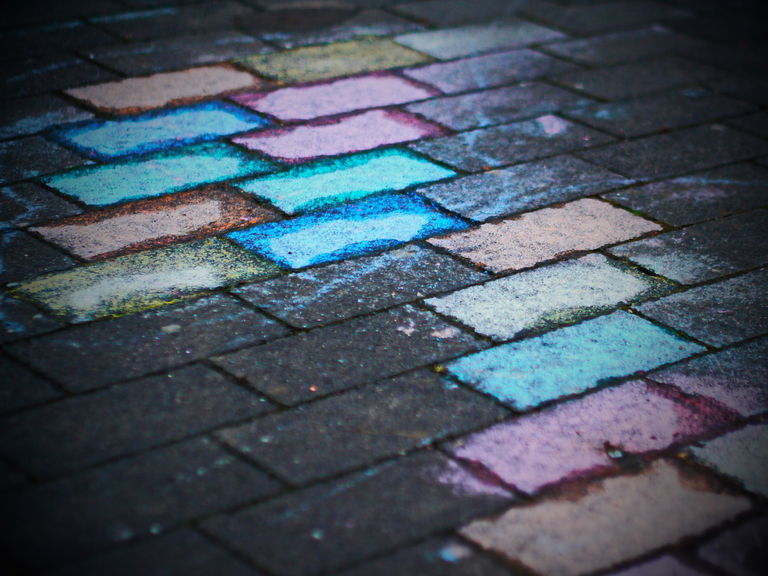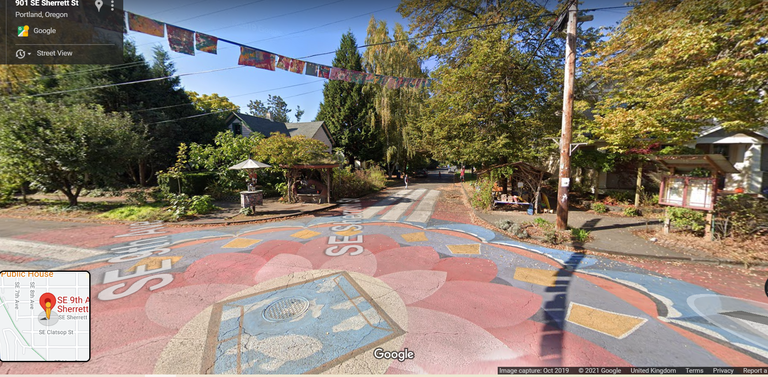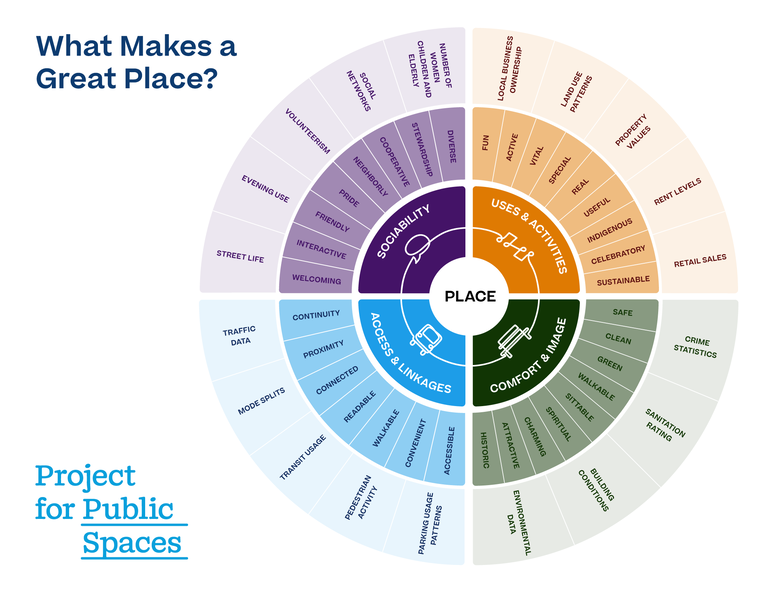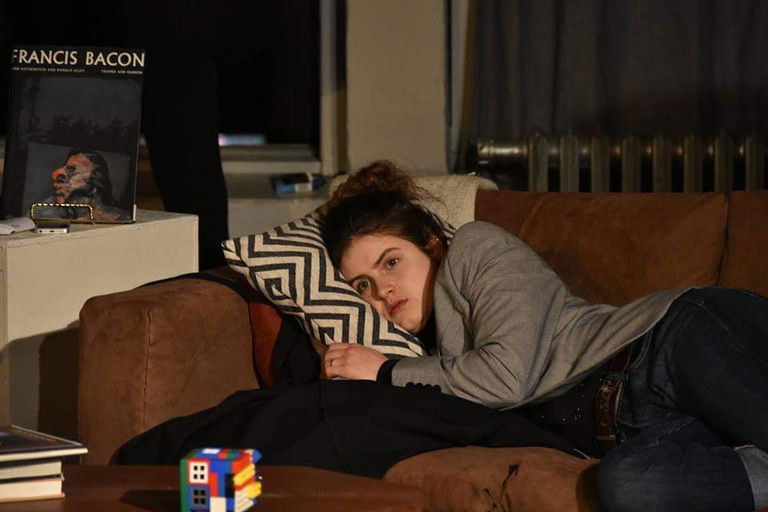
Reimagining Public Spaces: The Share-It-Square in Portland, Oregon
Laura Puttkamer for Culture Days
Jul 13, 2021
What did our streets look like before cars took over? In the early 20th century, streets had a broad range of uses, from events like markets to socialising and even combined birthday parties for children. With the advent of the car, this vibrant street life quickly became a distant memory of the past. Now, North American cities struggle with social isolation. COVID-19 has further exacerbated the problem, highlighting the lack of meeting places. How, then, can we revive the neighbourhood? How can we reimagine public spaces? Mark Lakeman, the activist behind the Share-It-Square in Portland, Oregon, has some answers.

Share-It-Square: Creating a Vibrant Community
Mark Lakeman has lived in Portland’s suburb Sellwood for decades. The son of the city’s Urban Design Division founder grew up with an appreciation of civic culture and activism. In his work as an architect and a planner, Mark has long been searching for a solution to bleak suburbs that are designed for cars and not for people. He went to look for a sense of aliveness in the city—all over the world—and eventually found it in a small village located between Mexico and Guatemala. Here, people meet at the intersections between their homes, eventually turning their meeting points into blooming spaces for gathering.
When he returned to Sellwood, Mark built a teahouse around the base of an old tree in his parents’ garden, inviting neighbours over. He aimed for a “public living room” which would eventually create a sense of community. This turned out to be just what the community had been missing: more and more neighbours turned up, thirsty not just for the tea, but for getting to know each other after years or decades of living on the same street. Soon, the teahouse evolved into regular potluck dinners. Dozens and then hundreds of people showed up and it became clear that more space was needed.
…there is a strong desire for retroactively introducing more public spaces, fighting against the car-centric culture and creating more accessible spaces that can foster public life.
The City of Portland was not supportive at first. The Bureau of Buildings wanted to tear down the teahouse structure and rejected planning applications to turn the street intersection into a city square. However, the invigorated neighbours took matters into their own hands. Together with their children, they turned the intersection into a colourful plaza, setting up a library in a phone booth, a message board, a kid’s playhouse, a corner for produce-sharing and a kiosk with a Thermos flask always full of tea.

Eventually, the City of Portland was convinced and granted conditional permit for these activities. “The neighbourhood had a design problem, not a human resources problem” explains Charles Montgomery, a Canadian urban planner, in his 2015 book Happy City. The new plaza quickly resulted in a much-improved community spirit, new friendships, and torn down fences between yards. Annual events and a tradition of sharing tools and food has led to the square’s name, the Share-It-Square.
This Square has been transforming Sellwood since the late 1990s. Every year, a new painting adorns the intersection. Neighbours maintain the many structures around the square and, most importantly, foster the new-found spirit of a functioning village. Inspired by the idea of a sharing economy, Mark and his team started the non-profit City Repair that provides resources and support to similar projects. More than 100 new public spaces have since been created in Portland alone, and much more than 1,000 imitations all across the United States have been inspired by the Share-It-Square as well. Annually, City Repair’s flagship event, the Village Building Convergence, takes place in order to inspire placemaking and community engagement all over the world.
What makes the Share-It-Square a Great Place?
Share-It-Square can look back at more than two decades of success—but, what makes this a great public space? The Project for Public Spaces (PPS), a non-profit from New York City, is an authoritative voice in judging the quality of public spaces. The organisation has established the following criteria for a good or great public space:

The Share-It-Square is located in the heart of Sellwood, but not too far from a main street. This makes it accessible and well-linked, providing a “focus for community identity and gathering”, as evaluated by the PPS. Comfort and image are evidenced in the long life of the square, the loving maintenance from neighbours and the always-available tea. A survey by City Repair showed that over 85% of neighbours felt a decrease in crime, a slowing of traffic, and an improvement in communication between neighbours. The Square also meets criteria such as diverse uses, activities throughout the year including neighbourhood celebrations, and increased sociability.
Based on this success, the City of Portland adapted a new ordinance allowing for street intersections to be transformed into similar public spaces if 80% of neighbours within two blocks sign statements approving the plan. This has led to many similar projects in the city, such as the popular Sunnyside Piazza.
How to Reimagine Public Space in Canadian Cities
COVID-19 has focused urban planners’ attention on the importance of public spaces and community cohesion. Reimagining public spaces is an important part of this discourse. Places such as the Share-It-Square can increase residents’ happiness and health. They provide important open-air meeting spaces that can prevent social isolation and make mutual support easier to organise.
Canadian cities have recognised the importance of reimagining public spaces, also looking towards the 15-minute-city trend. In Montréal, organisations such as Active Neighbourhoods and the Montréal Urban Ecology Centre work to get citizens involved in the planning and nurturing of public spaces. In Toronto, there are initiatives for Indigenous placemaking that focus on designing and managing public space through a people-centred lens. And, in Vancouver, an event called “Reimagining City Streets and the Public Realm: Towards a Green and Connected City” took place in March 2021, organised by the City and Simon Fraser University. Participants criticised that too much of city place (30% in the case of Vancouver) is dedicated to streets. Only 11% of Vancouver’s city area is dedicated to parks. These examples show that throughout Canada, there is a strong desire for retroactively introducing more public spaces, fighting against the car-centric culture and creating more accessible spaces that can foster public life.
So, if we want to reimagine public spaces, we should learn from our neighbours and our traditions. And Mark Lakeman, together with his organisation, is a particularly good neighbour, sharing resources and inspiring everyone to imagine new public spaces even in unexpected corners. His message to Canadian readers? Find your creative capacity and fight loneliness in cities by turning spaces into places.
Sources
“Happy City”, Charles Montgomery 2015, pp. 354
Interview with Mark Lakeman from May 19th, 2021
https://www.restreets.org/case-studies/share-it-square-sunnyside-piazza
https://medium.com/@lauravonputtkamer/reimagining-public-spaces-adapting-to-a-new-reality-9491959e9b7 https://www.youtube.com/watch?v=mQosMm_foYM&ab_channel=ThePolishAmbassador
https://cityrepair.org/share-it-square
https://www.pps.org/places/share-it-square
https://www.toposmagazine.com/portlands-share-square/
This article is part of a special blog series featuring writers and creatives from across Canada (and beyond!) with stories that both highlight and celebrate Culture Days’ 2021 theme, RE:IMAGINE. Explore more stories below.
- The Road Less Travelled: Three artists reimagine success and career by Linh S. Nguyễn
- Arts in Motion by Aaron Rothermund
- Refresh: How a Year on Instagram Redefined Artistic Communities by Eva Morrison
- RE:PURPOSE by Mike Green
- Recalibrating: A Look at Opera InReach by Anya Wassenberg
- Reimagine—How the Disability Community Accesses the Arts by Rachel Marks
- Reimagining Community and the Workplace of Theatre by Natércia Napoleão
- Helm Studios flips the for-profit music model to empower artists by Aly Laube
- Curating INUA, Canada’s newest Inuit art exhibit by Carolyn B. Heller
- When Less is More: What Theatre Can Learn From a Year in Slow Motion by Megan Hunt
- RE:ORCHESTRATING Our Future: Advancing Sustainable Development Through The Arts by Ryan Elliot Drew
- RE:DEFINING Normal: A Prescription for a Canadian Cultural Landscape in Recovery by Valerie Sing Turner
- Empathy Machines?: Exploring the Relationship between Immersive Art Technologies and Feeling by Jozef Spiteri and Sunita Nigam
- La poésie pour vivre différemment la pandémie par Jérôme Melançon





